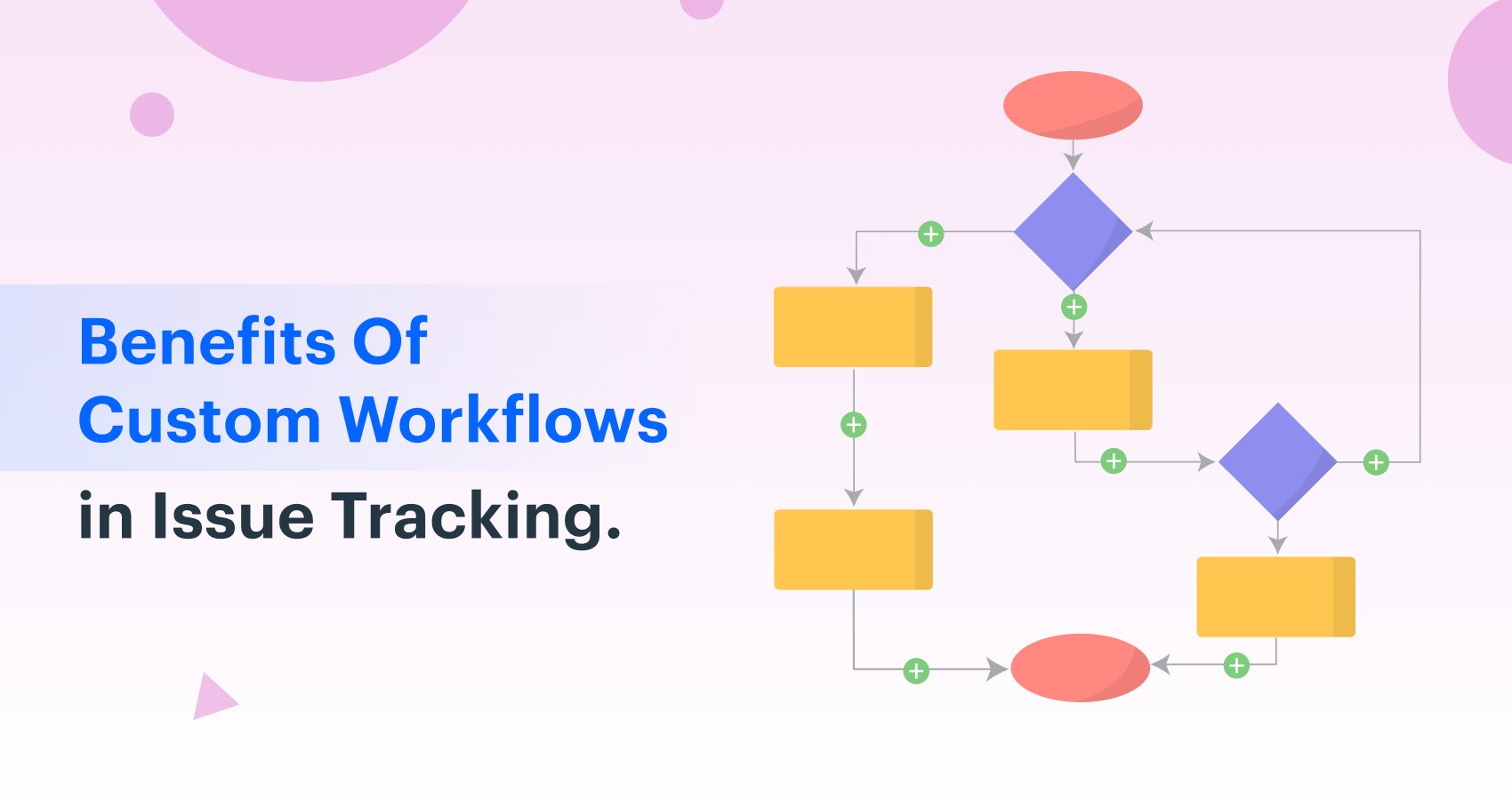Bugs and issues are a regular occurrence in any software process. Your development team can comb through the code multiple times, but issues will still fall through the cracks. That’s why software products usually go through multiple checks to ensure that the customers always get a bug-free version.
An issue tracker tool can go a long way in enhancing the overall quality of your products. The best choices allow you to customize issue tracking workflows according to your situation. Doing that effectively requires knowledge of the basic elements and the best practices that let you take the most advantage of your tool.
What is an Issue Tracking Workflow?

In the simplest terms, an issue tracking workflow is the process development and testing teams follow to identify, record, track, and manage bugs/issues. How to exactly do that depends on your organizational practices and project requirements. You can add multiple steps for reviews, approvals, and for reopening different issues to maintain the quality requirements of your team.
The 5 Most Essential Elements of any Issue Tracking Workflow
Effective issue tracking requires collaboration between the development and testing teams. Both teams work together to ensure that the final version remains free from all kinds of issues and bugs as they can potentially damage your reputation. Whether you are using a custom bug tracking workflow or something that comes with your tool, the following 5 elements are essential for best results.
Raising and tracking issues
Naturally, the most important thing for any issue tracking workflow is to intuitively allow testing teams to raise, track, and report the progress on any bug. Unnecessary complications at this step will increase the probability of having bugs or issues in the final version of your product.
Prioritizing issues
Not all issues demand your immediate and undivided attention. Your issue tracking workflow must allow you to prioritize its content so the development team can tackle the most pressing issues first.
Assigning routes
Bug triaging – assigning a persistent problem to the right fixer – is a crucial step, especially for large and complex software products. The right bug tracking process flow will facilitate assigning responsibilities and allow you to see how much your developers have on their plate.
Investigations
An often overlooked step that causes problems and delays down the line. Your issue tracking workflow should include a reminder to investigate the bug. Does it persist on other operating systems? Are there any other similar bugs in the product? What are the integrations/environmental factors that caused this issue? All of these questions are important and addressing them at the right time would increase your product’s quality.
Reopening issues
Some fixes or patches don’t work all the time because the developer or testers might have misidentified the actual problem that caused the bug. A good issue tracking app will have an option of reopening a solved issue so the development will know about issues that still persist
5 Best Practices to Manage your Issue Tracking Process Flow
The right issue tracking workflow is only one piece of the puzzle. Effectively managing bugs in the development process requires a lot of considerations. The following 5 best practices can help you remain in control and maintain excellent quality.
Merge development and testing processes
Go over the responsibilities of your development and testing teams, you’ll see that most of them are interlinked. Combining both processes can enhance the overall collaboration in your development process and improve your results.
One of the best and most recommended ways to do that is to use the same issue tracking tool for both teams. It would integrate both workflows perfectly, and you’ll also notice a significant boost in your overall productivity.
Include a step for validation
The most important entity for any development process is the end-user. The developers, testers, and all other related teams need to work together and ensure a seamless experience for the users. Validation is an important step towards achieving that.
Convey the right information concisely
Another important practice that ensures effectiveness in your issue tracking workflows is to improve your bug reports. Conveying the right details can help developers understand the problem and target its root cause. This would minimize reopenings and ensure a smoother overall process.
Conduct multiple tests
One mistake some testers make is to immediately report the bug without reproducing it. It’s crucial to avoid that. Double-checking the bug and reproducing it would improve your bug reports as you’d be in a better position to report it and explain all the factors that caused it.
Remain proactive
Finally, don’t restrict yourself to the simple process of reporting and fixing bugs as you notice them. Instead, try to improve your process one step at a time. Look for opportunities to improve your issue tracking workflow, try to streamline the development process, and always remain proactive when it comes to finding ways to enhance your productivity.
The right set of tools can help you avoid the most common problems in the development process. A custom issue tracking workflow can help you streamline the entire bug tracking process and effectively stay in control. There are a handful of bug tracking tools that allow you to customize the entire workflow from scratch. However, the problem is that they are too complicated to handle.
Kissflow Workflow is an all-in-one issue tracking solution that has all the advanced features and allows customized workflows without complicating things. The intuitive interface with drag and drop features is designed to facilitate your work and allow you to focus more on the actual job instead of being bogged down with intricacies.
Whether you are handling a small team of developers and testers or are working on a large software product with a lot of complexities, you’ll find Kissflow to be an ideal choice for managing an issue tracking process flow.
And the best part about it is that you don’t have to spend a fortune as well. It doesn’t get any better than this. Try Kissflow Workflow today.








